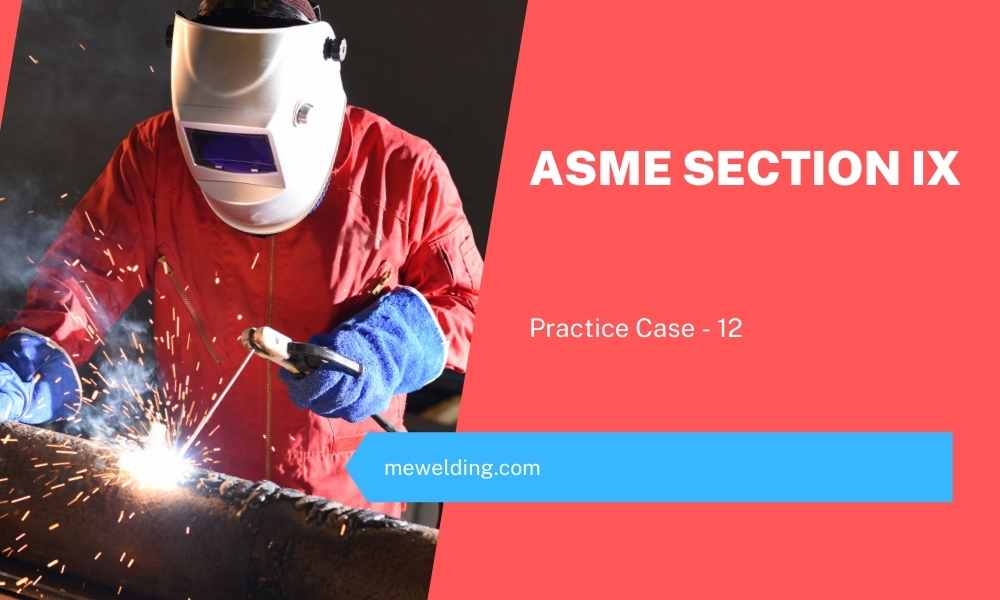This article studies an example of two procedure qualifications with different heat inputs, qualified on different base metal thicknesses. How does one go about when applying these PQRs to a single production weld joint. How to reckon heat input on a WPS in such situation?

Consider the following questions asked in Interpretation IX-92-87.
“Background: Two PQRs have been qualified to support a WPS with notch toughness requirements and having a qualified base metal thickness range from 5/16 in. to 2 in. inclusive. One PQR was qualified on 1 in. thick material with a maximum heat input of 85000 J/in. The second was qualified on 5/16 in. thick material with a maximum heat input of 45000 J/in. All other essential and supplementary essential variables are the same.
Question (1): Is this WPS qualified for using 85000 J/in. max. Heat input on thicknesses 5/16 in. to 2 in.?
Question (2): Is the heat input value of 85000 J/in. applicable to base metal thicknesses between 5/8 in. to 2 in. and the heat input value of 45000 J/in. applicable to base metal thicknesses between 5/16 in. and 5/8 in.?”
Let us summarize the given information in a table for easy reference:
| PQR 1 | Actual value in test coupon | Range Qualified |
| Heat Input | 85000 J/in. | 85000 J/in. maximum. |
| Thickness | 1 in. | 5/8 in. to 2 in. |
| PQR 2 | Actual value in test coupon | Range Qualified |
| Heat Input | 45000 J/in. | 45000 J/in. maximum. |
| Thickness | 5/16 in. | 5/16 in. to 5/8 in. |
When impact is a consideration, QW 409.1 limits the heat input to a maximum equalling that used in the procedure qualification test coupon. The range qualified for heat input shown in the above tables is therefore, in deference to the QW 409.1.
And, QW 403.6 governs the minimum base metal thickness qualified. The minimum base metal thickness qualified is equal to the test coupon thickness if the test coupon is less than 5/8 in., and equal to 5/8 in. if the test coupon thickness is more than 5/8 in. The lower value indicated under range qualified for thickness in tables above is therefore in accordance with QW 403.6.
The maximum base metal thickness qualified is of course 2T (T = test coupon thickness), as stipulated by QW 451.
Now, Section IX permits us in QW 200.2 to use multiple PQRs for supporting a single WPS. It is important to know that this does not permit us to mix two PQRs for a single weld at a time.
For example, a WPS can be written for several P-Number combinations if a supporting PQR is available for each combination. Likewise, a WPS can be written for a wide range of base metal thickness if a supporting PQR is available for each portion of the thickness range.
However, for one weld at a time, all essential variables (and supplementary variables, if applicable) should have come from a single PQR. In other words, when the arc is struck, all the variables involved should have support from only a single PQR. It is not permissible that some variables are supported by one PQR, and some other variables are supported by another PQR.
Related article: Multiple Welder Qualifications Through Single Test Coupon
With the above in mind, examine the two PQRs listed in tables above, and consider question 1.
The heat input of 85000 J/min can only be applied for thickness range qualified by PQR 1. Since the 5/16 in. to 5/8 in. thickness range falls outside the qualified range of PQR 1, the answer to the question 1 is ‘No’.
The inquirer is probably aware of the understanding discussed in above paragraphs, and has worded his second question in such a manner that a ‘yes’ answer from will reaffirm the understanding. The ASME’s answer to question 2 above has been given as ‘yes’.
It is interesting how, after understanding ASME’s proclivity towards giving ‘yes’ or ‘No’ answers, the Inquirers have grown smart enough to word their questions in such a way that a yes or no answer would sufficiently address the issue at hand. The question 2 above is a good example of this.
So this was about how to go about reckoning heat input on WPS when it is supported by two PQRs, qualified on different base metal thicknesses, and different heat inputs.
See More:
